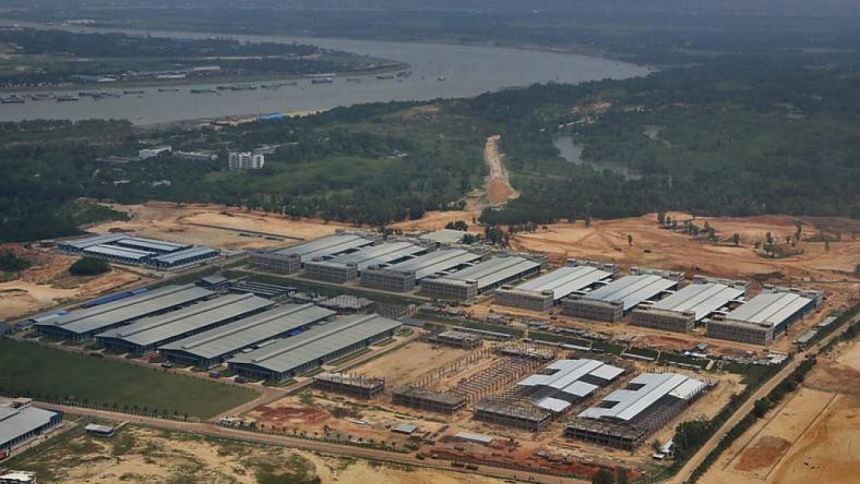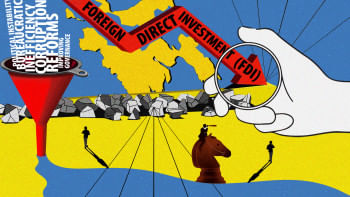Getting the most out of our economic zones

In 2011, Bangladesh lost a great opportunity to break into the global value chain for electronics. The Korean giant, Samsung, which had entered Vietnam just a few years prior, had set its eyes on Bangladesh. It wanted to invest $1.25 billion in an electronics plant in Chattogram that would employ 50,000 people. It wanted 250 acres of land to build its plant. Bangladesh could not provide that land. Samsung decided to take that investment to Vietnam and expand its operations there.
By the early years of the new century, the country was ready for an industrial take-off. But there was an emerging constraint that stood in the way. Businesspeople had started complaining about it. Newspapers were reporting it anecdotally. Then, in 2007, solid evidence came in the form of a World Bank report. An investment climate assessment for Bangladesh, the second in a series that had started in 2002, showed that scarcity of serviced industrial land was becoming a serious constraint.
Both the 2002 and 2007 investment climate assessments by the World Bank listed the top five constraints faced by businesses. Four of these were present in both reports. What was new this time was the access to land constraint. In 2007, almost 50 percent of the respondents identified this as a major or severe constraint—this was up from about 30 percent in 2002. Land scarcity was a perennial problem. Weaknesses in land recording and titling compounded it. Businesses found it difficult to obtain unencumbered and serviced industrial land, with good access to infrastructure and utilities. The environment was also harmed by rapid industrialisation. Entrepreneurs had set up factories indiscriminately, and scarce land was being used inefficiently.
At that time, the country had a small number of export processing zones (EPZs) and about 60 industrial parks. The latter were in bad shape, lacking good infrastructure and utilities, and some were in locations that made little economic sense. The EPZs were reasonably well-run, but these were, by definition, all export-oriented. The total area of available plots in these zones was also limited. Demand was rising for increasing the supply of serviced industrial land through the establishment of more zones, including those accessible by domestic businesses. Moreover, the inability to provide serviced land was a major factor discouraging FDI.
It was in this context that the government started thinking about an ambitious economic zones programme in 2007. This was meant to be a transformative agenda that would not only address the problem of serviced industrial land but would also help ensure that future industrialisation of the country would be better organised and environmentally sustainable. The programme also envisaged a move away from the purely public sector model of zone development and management prevalent in Bangladesh. This was a bold idea for a country. The report argued for allowing varying degrees of private sector participation, such as purely private zones where the private sector both develops and manages the zones, and PPP zones which may be publicly developed but managed by the private sector.
Where do we stand with the economic zones now? Currently, 122 investment projects are being implemented in the economic zones, with a total land allocation of 1,950 acres. This land amount compares well with the total land occupied by investors (2,300 acres) in the eight EPZs of the country, which represent an earlier generation of economic zones. In other words, the amount of serviced land made available to investors through zones has almost doubled with the advent of the new economic zones.
But what is the country getting, in terms of investment, exports, and employment, from this very substantial land allocation?
Data available from the Bangladesh Economic Zones Authority (BEZA) allow us to answer these important questions.
Of the 122 projects, 50 (41 percent of the total) have already commenced operations. The rest are in various stages of construction. Total investment to date is $5.06 billion, which is 57 percent of the total cost projected. It is projected that these investments will generate about 100,000 jobs. This amounts to 53 jobs per acre of allocated land compared to 217 jobs generated per acre in the EPZs. So far, 43,286 jobs have been generated, i.e., a little less than half the projected number. BEZA provides gender-disaggregated data, which tells us that four out of five jobs have gone to men.
The investments made in the zones are concentrated in a few sectors. The top five sectors account for 57 percent of the number of investors and an even higher proportion of investment value (77 percent). The food products sector is the most important, accounting for a little more than a third (35 percent) of the investments (by value) and almost one-third (29.8 percent) of employment generated. The chemical and chemical products sector is the second most important in terms of investment generated (18 percent), while the furniture sector is the second-largest job creator (13 percent).
When it comes to FDI attraction, the picture is not encouraging. Of the roughly $5 billion already invested in the ongoing projects, only $200 million, i.e., a meagre 4 percent, is FDI. In other words, even after addressing one of the main bottlenecks to FDI attraction, i.e., serviced land, we have not been able to use the economic zones to attract significant foreign investment.
One reason is that while the land and basic infrastructure are ready in the operational zones, many still suffer from an inadequate supply of energy. But why is it that the share of FDI in total investment is so low? If a sizeable amount of domestic investment is coming to the zones despite the energy-related issues, why are foreign investors not coming? This points to the weaknesses that remain in our investment promotion and attraction efforts and the deficiencies in our overall investment climate.
What about the export-orientation of the investments in the economic zones? This is an important question since increasing exports is an important development objective of Bangladesh, and the economic zones are supposed to make a major contribution here. The table provided summarises the situation.

Before we discuss the findings, let me clarify how I obtained these numbers. The BEZA database distinguishes between three categories of investment: a) 100 percent domestic-oriented; b) "mostly" domestic-oriented; and c) 100 percent export-oriented. For the "mostly" domestic-oriented category, I designated 20 percent of proposed investment, 20 percent of proposed employment, and 20 percent of land allocated as being export-oriented. For the 100 percent export-oriented investments, the corresponding figures are, of course, 100 percent. I then added up the export-oriented proposed investment, proposed employment, and land allocated for all the operational economic zones. Note that this does not include the EPZs, which belong to an earlier generation of economic zones; this article is about the contribution of the new generation of zones.
The results summarised are somewhat disappointing. We see a low export-orientation, with only about 8 percent of proposed investment and allocated land, and 25 percent of proposed employment being associated with export-oriented investments.
While good progress has been made in developing the economic zones, with more than 100 investors provided with land so far, the economic zones are far from fulfilling their promise—i.e., serving as a major vehicle for attracting FDI that will help diversify our exports and give us a foothold in global value chains. Thus far, economic zones are largely about local investors targeting the local market. This must change.
Syed Akhtar Mahmood is an economist who previously worked for an international development organisation.
Views expressed in this article are the author's own.
Follow The Daily Star Opinion on Facebook for the latest opinions, commentaries and analyses by experts and professionals. To contribute your article or letter to The Daily Star Opinion, see our guidelines for submission.

 For all latest news, follow The Daily Star's Google News channel.
For all latest news, follow The Daily Star's Google News channel. 







Comments